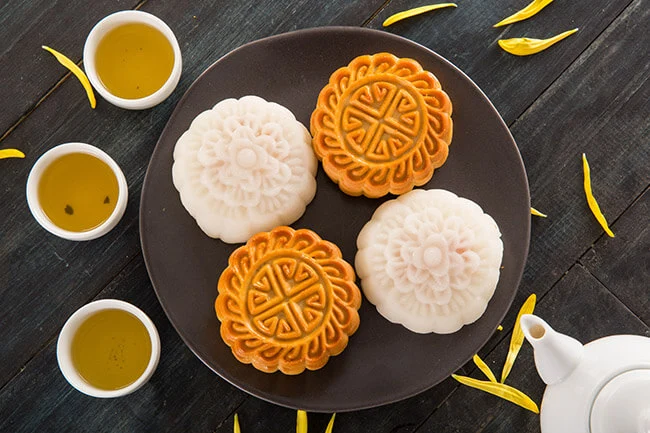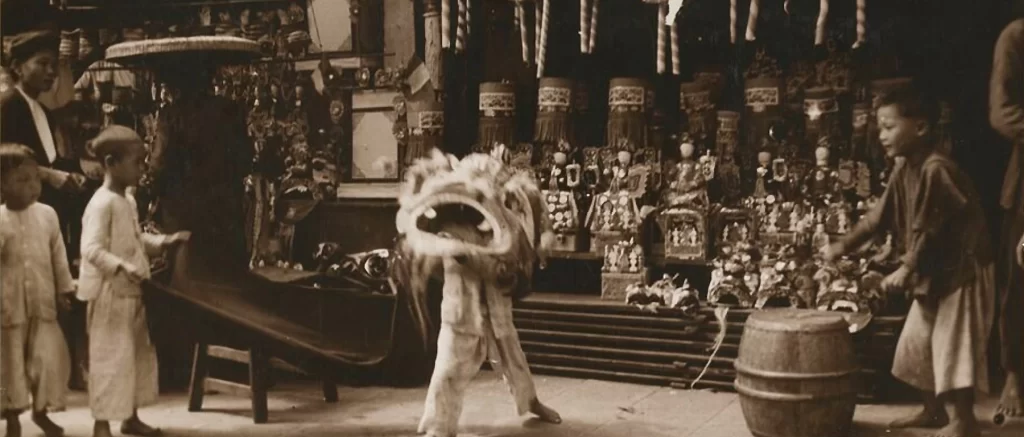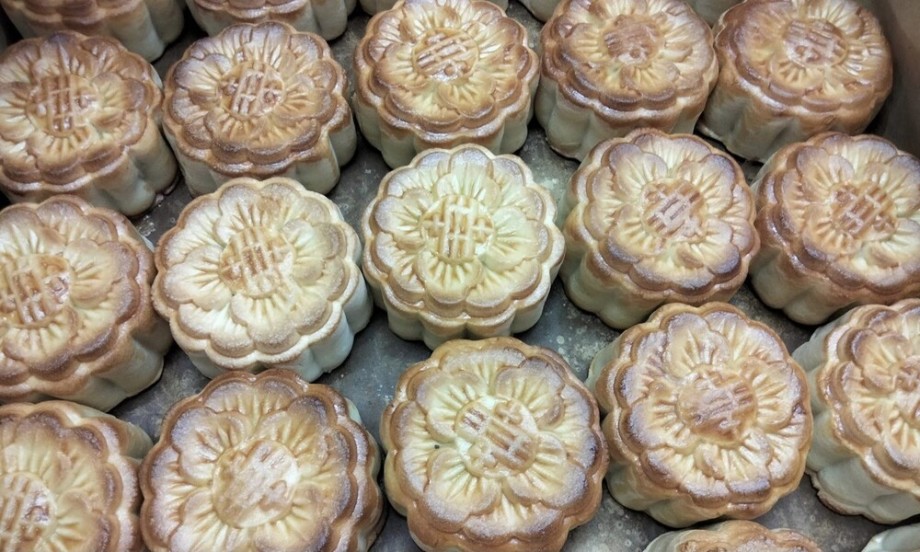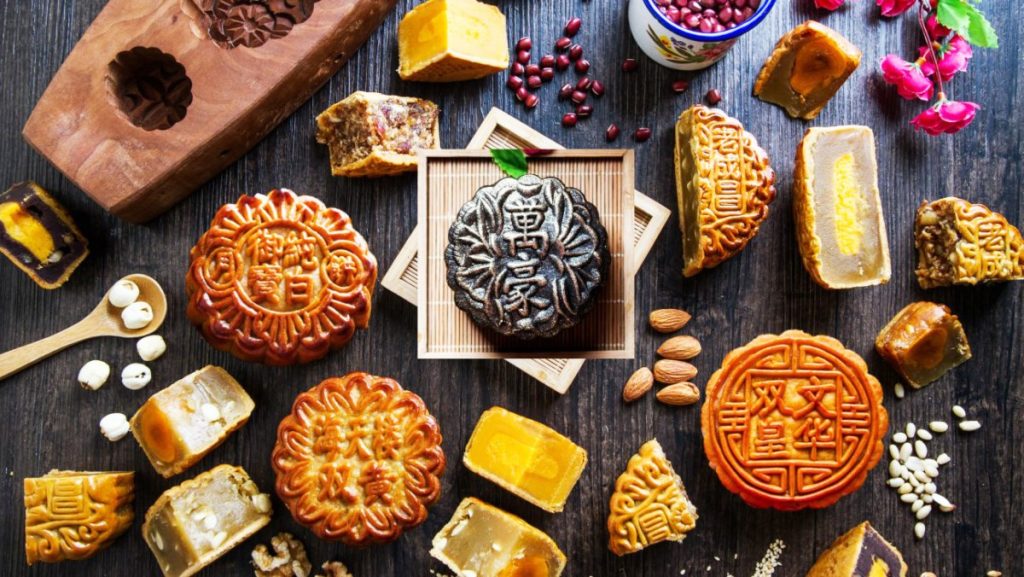Mooncake have long been an iconic symbol of the Mid-Autumn Festival in Vietnam. With their golden, shiny crust and sweet, fragrant filling, mooncake represent family reunion and harmony. Over time, mooncakes have not only evolved in form and flavor but also reflect the cultural and aesthetic diversity of Vietnamese cuisine. In this article, we will explore the richness of mooncakes through various periods, from traditional to modern.
Traditional Mooncakes – Tied to Vietnamese Heritage|

Vietnam’s traditional mooncakes come in two main types: baked and sticky. The baked mooncake features a crispy, golden crust with fillings such as green bean paste, lotus seeds, or a savory combination of pork fat, Chinese sausage, and candied fruits. The sticky mooncake, made from glutinous rice flour, has a smooth, chewy outer layer and is filled with green bean paste or lotus seeds.
These traditional ingredients are characteristic of Vietnamese cuisine. For instance, green beans from Hải Dương and lotus seeds from Huế are carefully selected from renowned regions. Each mooncake is meticulously handmade, reflecting the delicate artistry of Vietnamese bakers. The production of these mooncakes is often a family affair, with each step of the process—whether it’s making the dough, preparing the filling, or crafting intricate designs—done with a deep sense of pride and cultural tradition.
The Fusion Era During the French Colonial Period

In the French colonial era, the fusion of Eastern and Western culinary influences had a significant impact on Vietnamese cuisine, and mooncakes were no exception. New ingredients such as butter, cheese, and milk began to appear in mooncake fillings, introducing new, unique flavors. Mooncakes were no longer confined to traditional fillings but began to incorporate foreign ingredients, creating more diverse and innovative options.
This fusion made mooncakes more varied, both in appearance and content. The buttery outer crust of baked mooncakes, combined with fillings like lotus seeds, salted pork, and cheese, offered fresh, exciting choices for people during this period. This evolution also marked a new chapter in the evolution of mooncakes, allowing them to move beyond the boundaries of local ingredients and open up to global culinary trends. As a result, the mooncake gradually became a symbol of not just the Vietnamese tradition, but also a celebration of cross-cultural culinary creativity.
Modern Mooncakes – Creative and Health-Conscious Innovation

Today, mooncakes are not just traditional gifts but also a part of creative cuisine. Mooncake makers constantly innovate, combining modern ingredients to create new and exciting flavors. Many bakeries now experiment with a variety of fillings, including matcha, chocolate, coffee, fruit, and even exotic ingredients like durian or custard. These mooncakes are not only about new tastes but also about creating experiences that resonate with contemporary food lovers.
The fillings have become more diverse, with options like matcha, chocolate, coffee, and even cheese and melon. These modern mooncakes are made with traditional ingredients but also incorporate international elements to cater to contemporary tastes. Additionally, modern mooncakes often focus on health, with reduced sugar or sugar substitutes, allowing people to enjoy these traditional treats without compromising their health goals. The trend of healthier mooncakes has become increasingly popular as people are becoming more conscious about their diets, seeking alternatives that support their well-being while still maintaining the charm of the Mid-Autumn Festival.
The Evolution of Mooncake Designs Through the Ages

In addition to evolving flavors, modern mooncakes have also diversified in terms of appearance. Traditional mooncakes were typically round or square, but today they come in various shapes such as fish, lotus flowers, lanterns, and even popular cartoon characters. This trend reflects a more artistic approach to mooncake design, with creative shapes appealing to different generations, particularly younger people who seek novelty in the gifts they give and receive.
Modern mooncakes have become not only food but also works of art. Each mooncake is crafted with intricate designs, showcasing high aesthetic value. This is why modern mooncakes have become a luxurious and meaningful gift during the Mid-Autumn Festival. The careful decoration of mooncakes often includes delicate patterns, like the intricate floral motifs or embossed characters symbolizing prosperity and happiness. These design innovations elevate mooncakes from being a simple treat to a beautiful, handcrafted gift, making them perfect for sharing among loved ones during this festive time.
Vegan Mooncakes – A Trend for Health-Conscious Eaters

In addition to traditional and modern mooncakes, vegan mooncakes have also emerged as a popular choice. For those who embrace a healthy or vegetarian lifestyle, vegan mooncakes offer a suitable option that is both delicious and good for health. Vegan fillings often include nuts, beans, and vegetables, maintaining the original flavors without using animal products.
Vegan mooncakes are not only ideal for vegetarians but also serve as a thoughtful gift that shows care for the health of the recipient. They cater to a growing demand for plant-based products and align with a more health-conscious society that is increasingly opting for diets rich in plant-based ingredients. Vegan mooncakes are also part of the larger trend of sustainability, with many producers opting for eco-friendly packaging and ingredients sourced from sustainable farming practices.
The Combination of Tradition and Modernity
Over the years, mooncakes have undergone significant development and transformation. From simple traditional baked and sticky mooncakes to modern variations with diverse flavors and forms, the blend of tradition and modernity not only preserves the cultural values of mooncakes but also enriches Vietnamese cuisine. The rise of artisanal and boutique mooncake makers further underscores the evolving nature of mooncake production, where each batch is crafted with care and attention to detail.
Each mooncake tells a story, reflecting the mark of different historical periods. Regardless of the era, mooncakes always uphold the values of family reunion and harmony, core cultural symbols that have been passed down through generations. In contemporary society, mooncakes are no longer just a seasonal delicacy; they have become part of a wider conversation about food innovation, health, and sustainability.
Mooncakes are a fusion of culture, cuisine, and Vietnamese art through the ages. The diversity of flavors, designs, and creative innovations have secured mooncakes a strong place in the hearts of the Vietnamese people. Every Mid-Autumn Festival, when enjoying these mooncakes, we not only savor their delicious taste but also feel the deep cultural connections that have shaped our nation throughout history.
Conclusion: The Timeless Appeal of Mooncakes
As we continue to celebrate the Mid-Autumn Festival, mooncakes remain a beloved symbol of Vietnamese culture. They embody the spirit of togetherness, family, and celebration while evolving to meet the changing tastes and preferences of modern society. Whether traditional or contemporary, whether filled with classic ingredients or exotic flavors, mooncakes will always hold a special place in our hearts as a representation of the rich culinary and cultural heritage of Vietnam.
